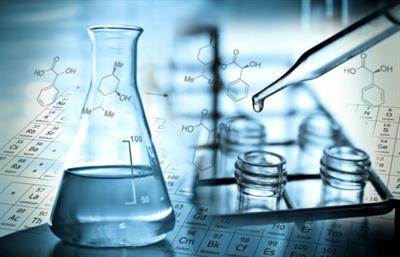A Comprehensive Overview to Assessing Chemical Products for Optimal Integrated Solutions in Manufacturing and Beyond
In the increasingly intricate landscape of production, the evaluation of chemical products stands as a pivotal element in achieving integrated options that focus on safety, effectiveness, and sustainability. This extensive guide lays out important aspects such as regulative conformity, item compatibility, and cost-effectiveness, all while emphasizing the relevance of ecological stewardship.
Comprehending Regulative Compliance
In the world of manufacturing, comprehending regulatory conformity is extremely important for guaranteeing both item security and ecological security. Regulative structures, such as the Occupational Safety and Wellness Management (OSHA) criteria and the Environmental Protection Firm (EPA) guidelines, determine the risk-free handling, storage space, and disposal of chemical items. Compliance with these policies not just safeguards workers but likewise lessens ecological influence and boosts a company's track record.
Suppliers need to diligently assess the chemical materials they make use of, ensuring adherence to the appropriate safety information sheets (SDS) and labeling requirements, which supply crucial information regarding hazards and secure usage. Furthermore, staying abreast of industry-specific regulations, such as the Registration, Analysis, Authorisation and Limitation of Chemicals (REACH) in Europe, is critical for keeping conformity and avoiding potential lawful implications.
Routine audits and training are vital elements of a comprehensive conformity technique, promoting a culture of safety and awareness among employees. By prioritizing regulative conformity, suppliers can minimize threat, improve operational performance, and add to sustainable methods within the market, eventually leading to enhanced product top quality and consumer contentment.
Assessing Item Compatibility
Governing conformity sets the structure for risk-free manufacturing techniques, yet reviewing product compatibility is equally essential for operational effectiveness and security. Chemical Products. Item compatibility describes the capability of different chemical compounds to exist side-by-side without negative interactions that might endanger the honesty of procedures or products. A detailed analysis starts with comprehending the chemical properties, including reactivity, solubility, and stability under various conditions
Makers ought to conduct compatibility testing to recognize prospective responses that might occur when chemicals are blended or enter contact with each other. This consists of evaluating elements such as temperature level variations, stress changes, and the visibility of impurities. It is likewise necessary to consider the results of materials made use of in containers, pipelines, and equipment, as these can affect chemical habits and efficiency.
Furthermore, manufacturers have to evaluate the possible impact of product compatibility on end-user applications. Incompatible products can lead to functional disruptions, product failings, and security threats, which can damage credibility and financial standing. Consequently, a methodical approach to assessing item compatibility not only boosts functional efficiency but likewise makes certain the safety and dependability of chemical products throughout their lifecycle.
Examining Cost-Effectiveness
Assessing cost-effectiveness is crucial for makers intending to optimize their chemical production processes while keeping success. This analysis starts with an extensive analysis of both direct and indirect expenses connected with chemical products. Straight costs include the acquisition rate of chemicals, transport, and storage space, while indirect prices may include labor, maintenance, and overhead expenses.
To successfully evaluate cost-effectiveness, makers need to use a complete cost of possession (TCO) approach. This method enables a detailed understanding Website of all prices throughout the item lifecycle, from procurement to disposal. Additionally, using efficiency metrics-- such as return rates and process performance-- can supply understandings into how well chemical items add to overall production objectives.
Benchmarking against market requirements can additionally highlight prospective areas for expense decrease or enhancement. By comparing their costs and efficiency with rivals, producers can identify ideal methods and cutting-edge remedies.
Moreover, involving vendors in conversations concerning rates, volume price cuts, and long-term contracts might yield positive financial setups. Inevitably, a tactical concentrate on cost-effectiveness sustains not just success however likewise sustainability in the competitive landscape of chemical production.
Studying Environmental Effect

One important element is the option of resources. Lasting sourcing can substantially decrease unfavorable impacts, as renewable or much less dangerous materials usually cause lower exhausts and fewer harmful results. Makers should consider the efficiency of their manufacturing processes; maximizing these can decrease waste and energy usage.
In addition, product formulation plays a vital duty in determining environmental safety. Utilizing green chemistry concepts can bring about the growth of safer, much check less polluting options. Suppliers should also evaluate end-of-life scenarios for their items, advertising recycling or secure disposal techniques to minimize lasting environmental consequences.
Incorporating these factors to consider right into product analysis not only improves business duty yet also aligns with raising consumer demand for eco pleasant items. Chemical Products. Ultimately, a detailed analysis of environmental influence is vital for promoting lasting production methods
Applying Quality Assurance Steps
The commitment to lasting techniques and environmental safety normally prolongs to the application of high quality control procedures within making processes. Quality assurance is crucial for ensuring that chemical items meet predefined standards and regulations, therefore protecting not only product efficacy yet also ecological integrity.
To properly implement high quality control steps, makers should embrace a systematic strategy, starting with the facility of clear top quality standards. This includes specifying specifications for raw materials, intermediate items, and final results. Routine screening and inspection methods must be instituted to monitor compliance with these benchmarks throughout the production cycle.

Training and involving personnel in quality assurance practices is just as vital. A well-informed labor force adds to a culture of quality and liability, enhancing overall functional efficiency. click here for more Inevitably, rigorous quality assurance gauges not just guarantee compliance yet also fortify the brand name's credibility and foster count on amongst consumers, lining up with the overarching objectives of sustainability and security in the chemical production field.
Verdict
In verdict, the examination of chemical items requires a complete understanding of regulatory compliance, product compatibility, cost-effectiveness, and environmental effect. This overview offers as a crucial source for attaining these essential goals in chemical product analysis - Chemical Products.